Is it Blackberry Leaf Rust or Orange Rust?
Above image: Photo by Jay W. Pscheidt, (c) Oregon State University. Reprinted with permission.
By John R. Clark, University of Arkansas and Phil Brannen, University of Georgia
When someone mentions rust to blackberry growers, what usually comes to mind is the devastating orange rust disease. However, there are two rust diseases observed in southern blackberry production – orange rust and cane and leaf rust. We are not sure if leaf rust is being seen in other regions of the country than the South, but we want to share info with growers across the US. It is very important that one be able to distinguish the two, as the control recommendations are very different. Both require a comprehensive spray program for management (see the IPM guide at the www.smallfruits.org website).
Orange rust is systemic, meaning that once observed, complete destruction of the plant is necessary to prevent further spread. Navaho is usually the most-often affected variety, so those growing other varieties seldom see this disease. Cane and leaf rust, though important, is not nearly as devastating. If producers misidentify cane and leaf rust as orange rust, they will often destroy plants that could readily live and produce blackberries in the current and future seasons – a critical and unrecoverable mistake.
Orange rust is caused by the fungus Gymnoconia nitens, but the fungus Arthuriomyces peckianus, causing identical symptoms, may also be the cause of the disease. We most often see G. nitens. Orange rust is usually first observed in the early season at primocane emergence and bloom. The most striking symptom is very bright orange, blister-like sporulation, seen on spindly, elongated shoots near the base of plants. The sporulation is more pronounced on the leaf margins, as opposed to the center. Leaves affected by the fungus are also misshapen or often cupped (Fig. 1 A and B).
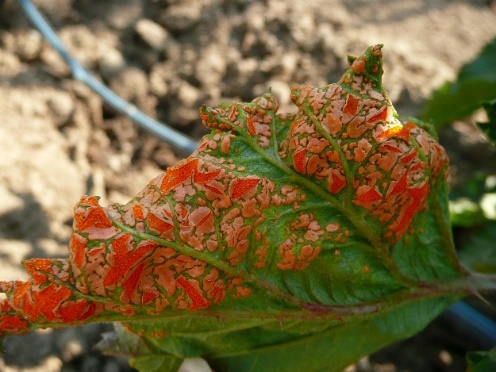
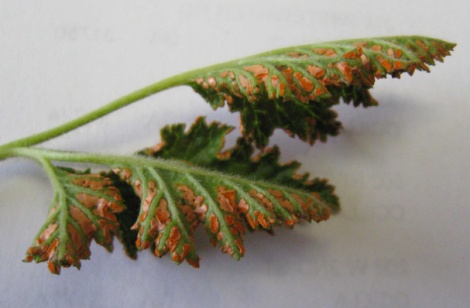
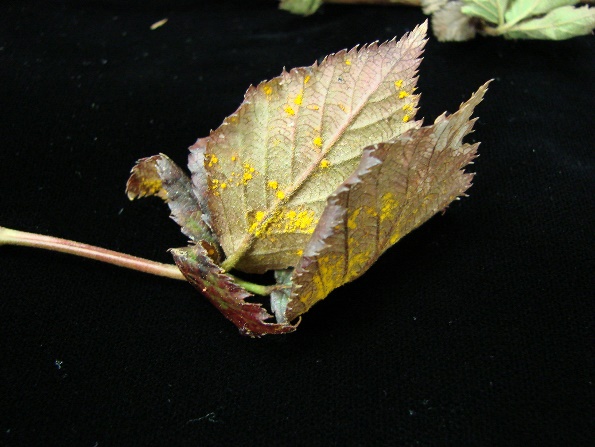
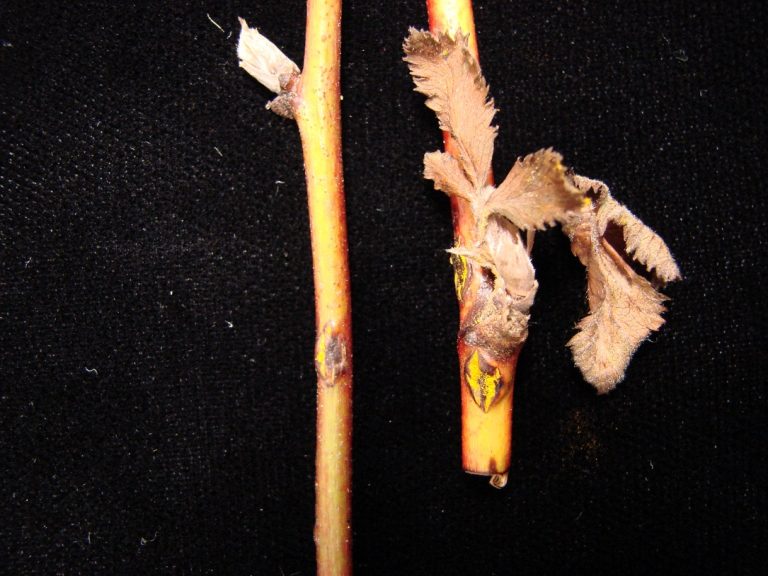
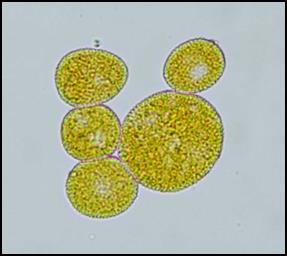
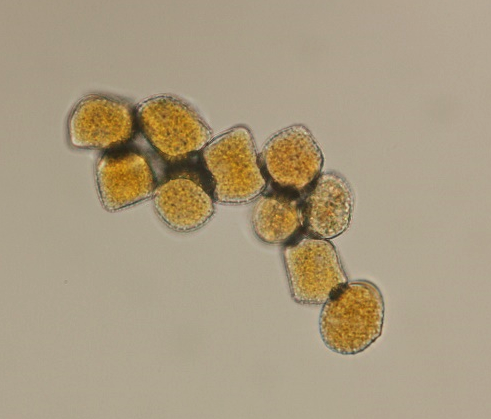
More often, producers observe cane and leaf rust later in the growing season, often during harvest and onward into the summer and fall. However, with warmer winters in recent years in the South, rust symptoms are now being observed on old leaves and earlier than normal on young leaves – confusing producers who assume they have orange rust due to the timing. Cane and leaf rust is caused by the fungus Kuehneola uredines, and it is generally seen first on the undersides of floricane leaves in the fruiting area of the canes (Fig. 2 A). It can also be seen on primocanes later in the summer.
There are several differences in the symptoms observed with the two different rusts. The orange rust leaf lesions are generally orange, whereas the cane and leaf rust lesions are more yellow in appearance. However, this is not a great way to discern between the two, as color will vary. As mentioned above, the orange rust fungus produces blister-like lesions that distort the leaf at the margins, while the middle of the leaf may not show symptoms or fungal structures. With cane and leaf rust, the pustules are spread throughout the leaf, and they do not tend to distort the leaf; in addition, cane lesions can also be observed (Fig. 2B). The most definitive way to distinguish the two is by spore type, and a compound microscope is required for this. Orange rust spores are generally round with lobed margins (Fig. 1C), as opposed to the irregularly shaped and spiny spores of cane and leaf rust (Fig. 2C). Many county agents now have microscopes in their offices, and if not, they can readily send leaf samples to various diagnostic clinics for microscopic confirmation.
We don’t have good information on variety differences in susceptibility to cane and leaf rust. In 2016, the disease was particularly severe on floricane leaves on unsprayed plants in Arkansas. More cane and leaf rust was seen on Prime-Ark® Freedom than Prime-Ark® Traveler, while none was observed on Natchez nor Ouachita. However, one year’s data is not enough to base any reliable variety comments. We likely will learn more if this disease becomes more common. However, on plants in Arkansas, particularly some breeding selections, the infection was severe enough to damage floricane leaves, resulting in reduced berry size and quality. This is the main concern with this disease at this time.
Control of both of these rust diseases is largely accomplished through use of chemical fungicides. Again, recommendations are found in the caneberry IPM guide found at www.smallfruits.org. Application of fungicides from early bud break through harvest are recommended. Mid-summer temperatures are not as conducive for orange rust development, but as fall temperatures drop, it is anticipated that rust may continue to infect. We are limited in the classes of chemistries with rust activity, but an alternation of demethylation inhibitor (Rally) and strobilurin (Abound, Cabrio, and Pristine) materials is recommended as part of a comprehensive disease management program for rusts and other diseases. Do not exceed label rates and follow all label recommendations when using these fungicides. Sprays should generally be made every 10-14 days if conditions are dry and 7-10 days if conditions are wet.
Additional Resources
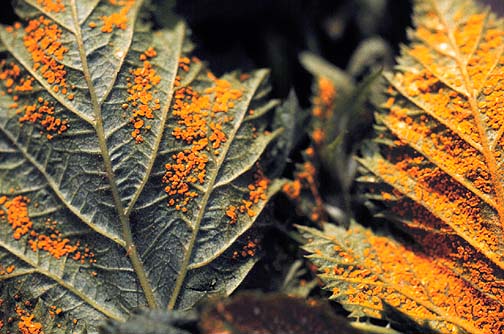
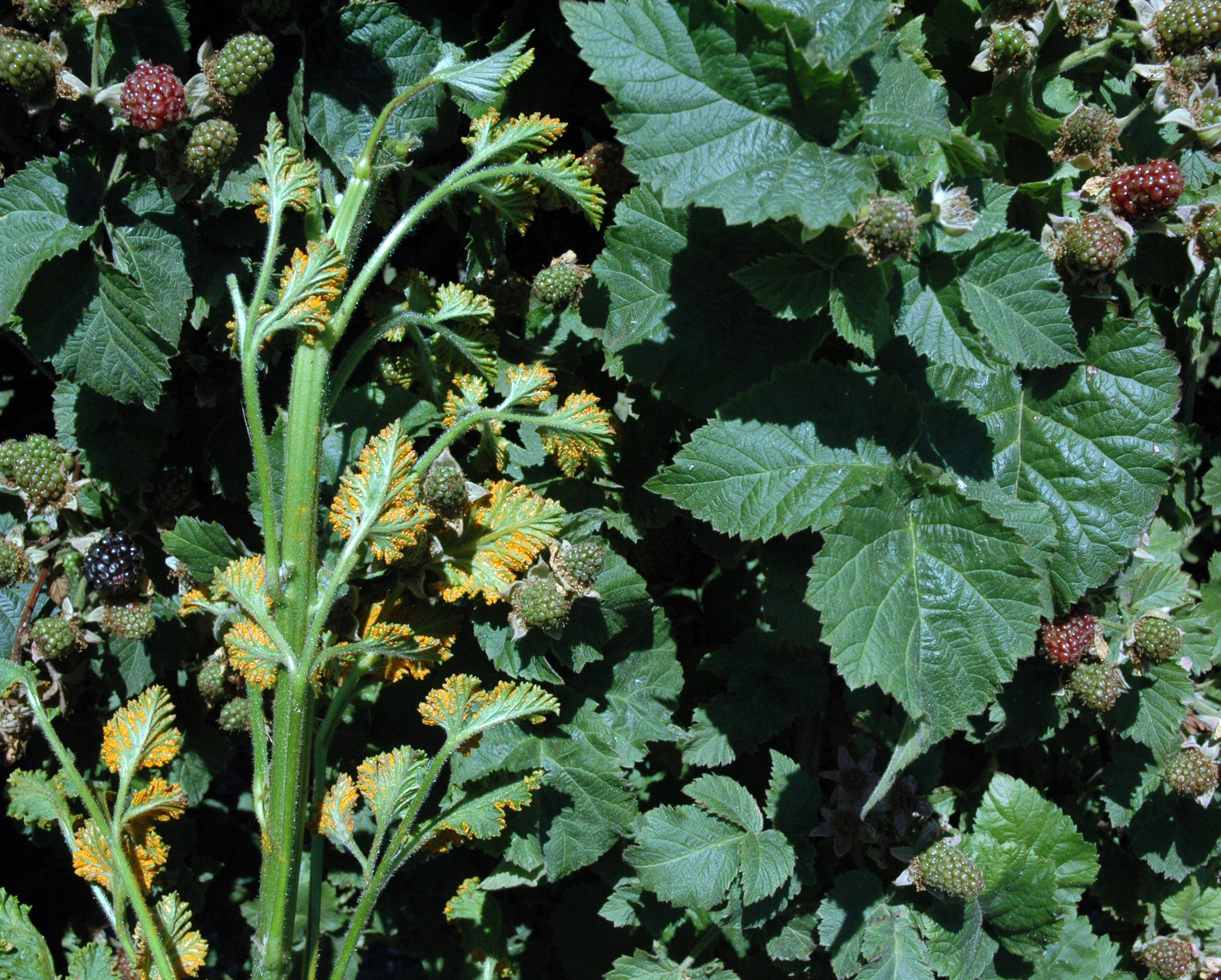
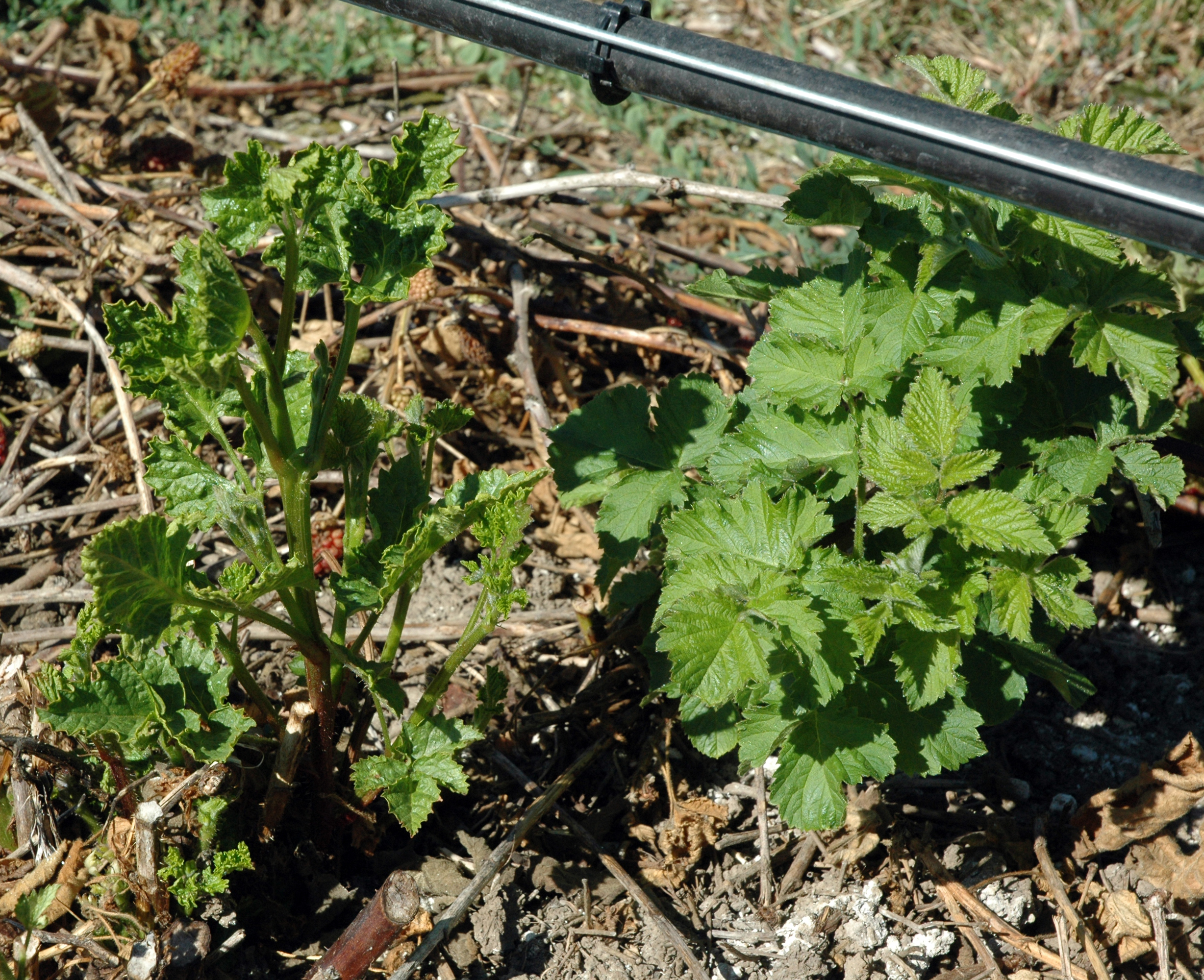
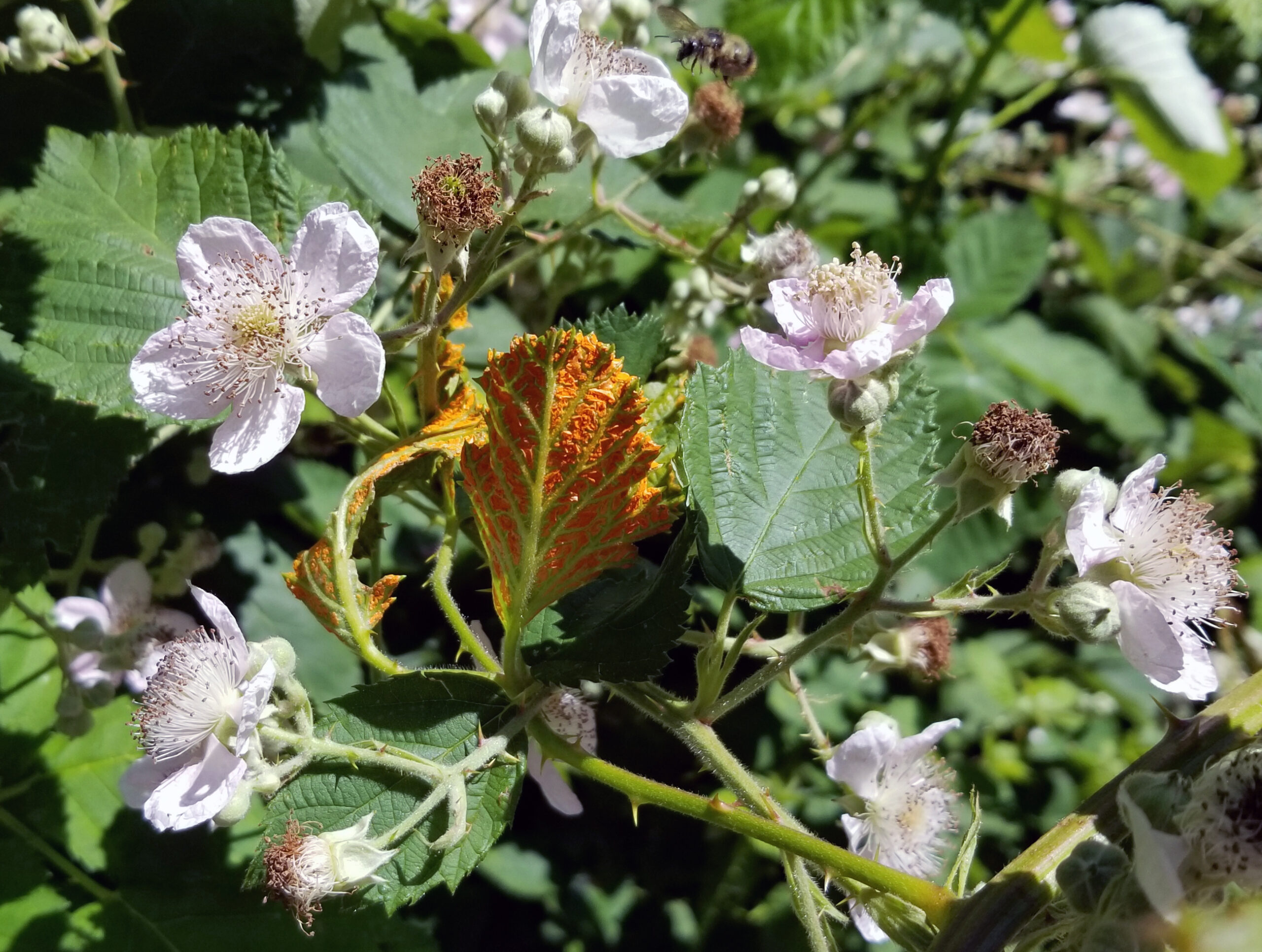
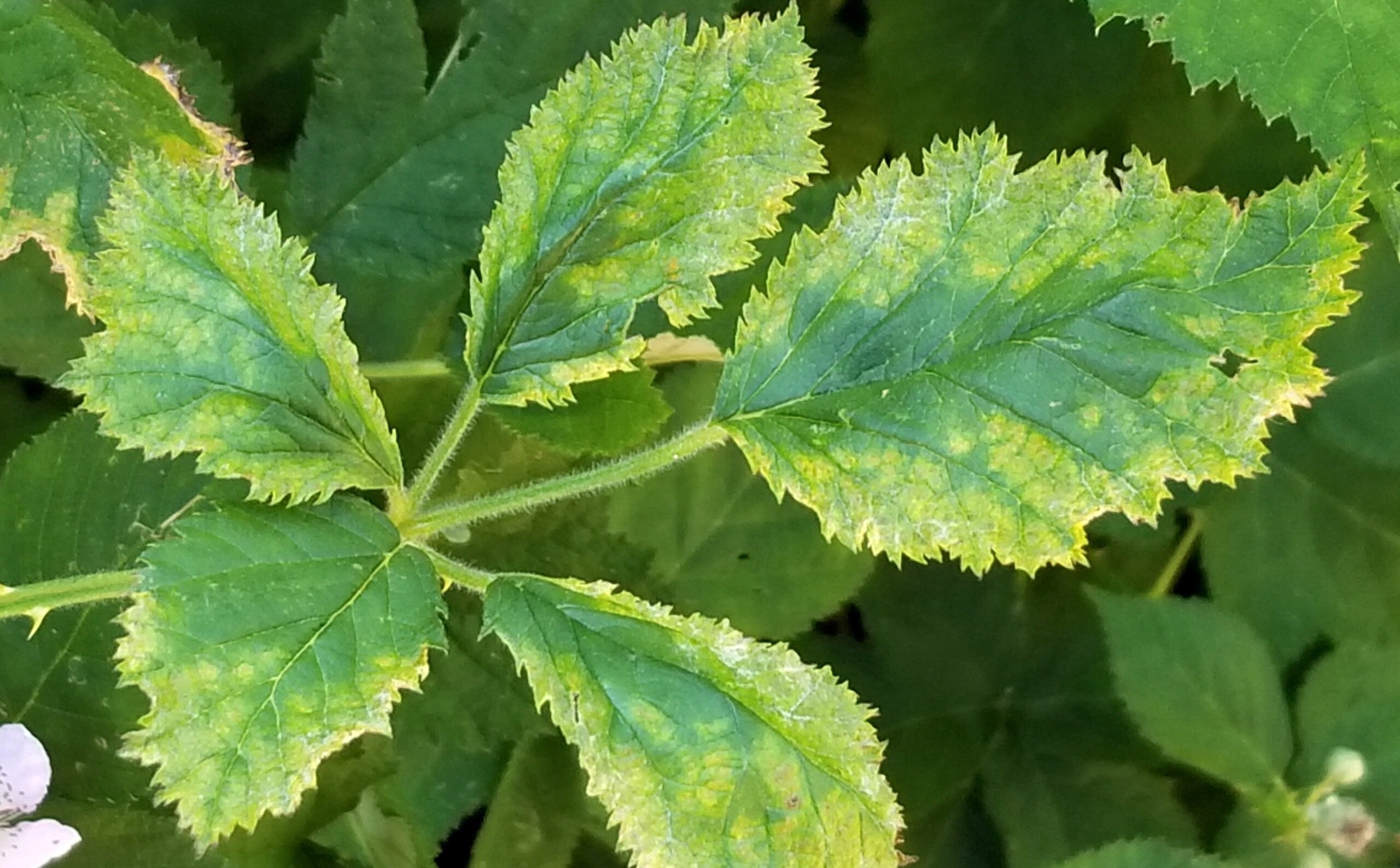
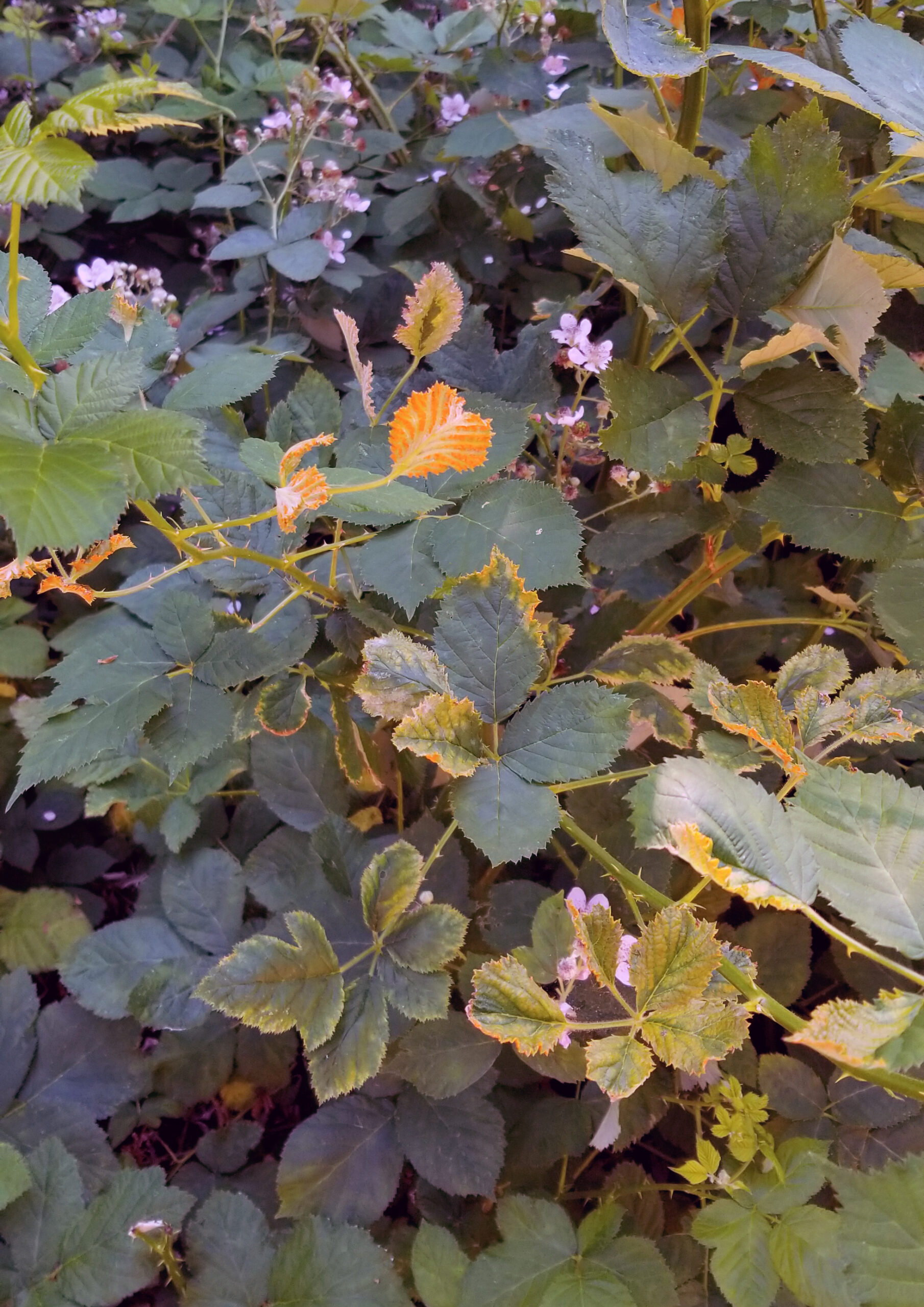
Resource links
University of Arkansas Division of Agriculture Research & Extension – Management of Important Blackberry Diseases in Arkansas
Michigan State University Extension, Department of Plant, Soil, and Microbial Sciences – It’s That Time of Year for Orange Rust in Brambles – Updated June 2017
Purdue University – Facts for Fancy Fruit – Orange Rust in Brambles – Updated April 2017
The Ohio State University Extension, Department of Plant Pathology, Ohio Agricultural Research and Development Center – Orange Rust of Brambles – Updated June 2017
North Carolina State University Extension, Entomology & Plant Pathology – BOLO for Orange Rust! – Updated May 2022
